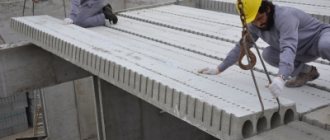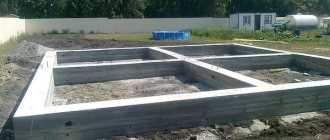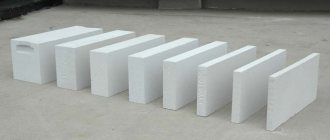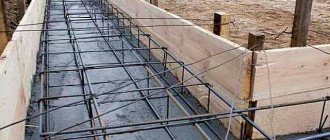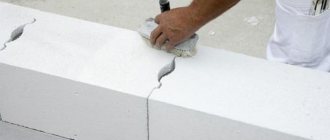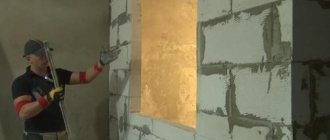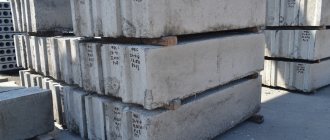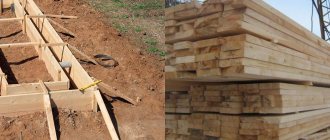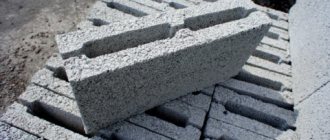Converting the weight of reinforcement into its length and vice versa is required when solving practical problems of calculating construction estimates, purchasing material in trade, and drawing up a reinforcement scheme for a concrete structure. As a rule, it is not difficult to find fairly accurate tables for converting one unit of measurement to another - they are available both in reference books and on the Internet.
Converting the weight of reinforcement into its length and vice versa is required when solving practical problems of calculating construction estimates, purchasing material in trade, and drawing up a reinforcement scheme for a concrete structure. As a rule, it is not difficult to find fairly accurate tables for converting one unit of measurement to another - they are available both in reference books and on the Internet.
How much reinforcement is in 1 ton: meters, pieces
The number of meters and pieces of reinforcement in 1 ton depends on the diameter of the rod used. It is necessary to know this when purchasing material, so that you can independently check the quantity of goods supplied, as well as calculate the volume of reinforcement for reinforcing monolithic structures.
Footage of reinforcement in ton: calculation example, table
Let's look at an example of how the calculation is made and find out how many meters of reinforcement with a diameter of 12 mm are in 1 ton.
To calculate, we need to know the mass of 1 meter, look at the table of the weight of the reinforcement, it is equal to 0.888 kg. Now we divide 1000 kg by 0.888 kg, we get 1126.13 m. For convenience, below is a table that immediately indicates the footage of the most popular steel rods in construction.
| Rod diameter, mm. | Number of meters in 1 ton |
| 6 | 4504,5 |
| 8 | 2531,65 |
| 10 | 1620,75 |
| 12 | 1126,13 |
| 14 | 826,45 |
| 16 | 632,91 |
| 18 | 500 |
| 20 | 404,86 |
| 22 | 335,57 |
| 25 | 259,74 |
| 28 | 207,04 |
| 32 | 158,48 |
| 36 | 125,16 |
| 40 | 101,32 |
| 45 | 80,13 |
Knowing how many meters are in 1 ton, you can easily convert the reinforcement from meters to tons. For example: we will convert 8956 m of rods with a diameter of 12 mm into tons. For this, 8956/1126.13=7.953 (t). In this way, any size of whip can be converted by simply dividing the total length by the length of 1000 kg.
Number of reinforcement pieces per ton: calculation example, table
Knowing the footage of the rods in 1000 kg, you can make calculations by the piece. Let’s also look at how to do this using an example, let’s calculate how many pieces of 12 mm reinforcement are in 1 ton, 12 m long and 11.7 m long (the most common lengths produced by factories).
To calculate the number of pieces, we take the total footage in one ton, for rods 12 mm long, it is equal to 1126.13 m, and divide by the length of the rod 12 m, we get 93.84 pieces, for a rod 11.7 m long, the result is 96.25 pieces . The table below shows the number of whips of the most common sizes (calculated values are rounded to the nearest tenth).
| Diameter of fittings, mm. | Number of pieces per ton of rods 11.7 m long. | Quantity for rod length 12 m. |
| 6 | 385 | 375,4 |
| 8 | 216,4 | 211 |
| 10 | 138,5 | 135 |
| 12 | 96,2 | 93,8 |
| 14 | 70,6 | 68,9 |
| 16 | 54,1 | 52,7 |
| 18 | 42,7 | 41,7 |
| 20 | 34,6 | 33,7 |
| 22 | 28,7 | 28 |
| 25 | 22,2 | 21,6 |
| 28 | 17,7 | 17,2 |
| 32 | 13,5 | 13,2 |
| 36 | 10,7 | 10,4 |
| 40 | 8,6 | 8,4 |
| 45 | 6,8 | 6,7 |
An example of a calculation using a table: let’s say for reinforcing aerated concrete blocks and an armored belt, you need 600 kg of 10 mm reinforcement. In order to make it convenient to transport, 12 meter rods were cut into 6 m lengths. To find out their number, take the table value of 135 (pieces per ton) and multiply by 0.6, equal to 81 pieces. Since they were divided in half, we multiply 81 by 2, we get 162 rods of 6 meters each.
Do not forget that when cutting reinforcement into short rods, its consumption for reinforcing the structure increases, since more overlaps will have to be made. It is worth taking this into account when calculating and purchasing materials for construction.
According to these tables, you can calculate the required tonnage of rods for reinforcing a strip foundation, monolithic belt and other reinforcing structures, based on the footage of the building. And also, you can calculate for yourself whether the material was brought to you correctly by recalculating its quantity.
Norm calculation options
It is not difficult to calculate the consumption of reinforcement per cube of concrete. Between the rows of the supporting structure, with stable soil (not subject to buoyancy and swelling), the distance can be 20–30 centimeters. It is necessary to retreat 5 centimeters from all edges so that the solution completely hides the frame and protects it from environmental influences (from corrosion). For the transverse strips of the reinforcing frame, in order to save money, products of the smallest diameter and cost are chosen.
Behavior of concrete structures without reinforcement under loads
Example of calculations No. 1 (1 m³)
Calculation of consumption of reinforcement with a diameter of 12 millimeters for horizontal rows:
- In one concrete cube (that is, in a block with a length, width and height of 100 cm) 4 longitudinal rows will fit (step 30).
- Each row will have 4 stripes.
- Total: 4*4=16 ninety-centimeter rods (100-2*5).
- The total length of the reinforcing elements is 16*90=1440 (14.4 m).
Calculation of reinforcement consumption for transverse horizontal and vertical elements made of material 8 mm thick:
Calculation of reinforcement for a pile foundation
- One cross section will accommodate 4 recumbent and standing ninety-centimeter rods (8 in total).
- The section is repeated every 0.3 units, which means that it is present 4 times in one cube.
- Total: 8 * 4 = 32 ninety-centimeter metal rods, located across the width in one cube of concrete.
- The total length of the material is 32*90 = 2880 (28.8 m).
Conclusion: to strengthen a concrete block measuring 1 m³, you will need 14.4 twelve-millimeter and 28.8 meters of eight-millimeter reinforcement.
To calculate the total amount of building material needed to strengthen a particular foundation, you need to know its type and exact dimensions.
Example of calculations No. 2 (tape sample)
Calculation of the amount of metal products to strengthen a strip foundation with a width of 40, a perimeter of 3000 (9 * 6), a height of 100 centimeters:
Reinforcement calculation
- The width will fit 2 strips of reinforcement (pitch - 30 cm, thickness - 10 mm).
- A 1 meter deep base will accommodate 4 horizontal rows.
- Total: 4*2=8 strips, length equal to the perimeter of the supporting parts, that is, 3000 centimeters.
- The total length is 8*300=24000 (240 m).
- The cross section will fit: 4 horizontal rows of thirty-centimeter rods with a thickness of 6: according to the formula (40–2*5) and 2 vertical ninety-centimeter metal rods (100–2*5).
- Total: 4*30+2*90=120+180=300 (3 m) reinforcement in one section under consideration.
- The perimeter of the base is 3000, and the transverse section will be repeated every 30 cm, that is, 3000/30=100 times.
- The total length is 100*300 = 30000 (300 m).
Conclusion: to strengthen a strip foundation 40 centimeters wide and 100 centimeters deep for a 6*9 house, you will need 240 ten-millimeter and 300 meters of six-millimeter metal products.
Foundation installation diagram
